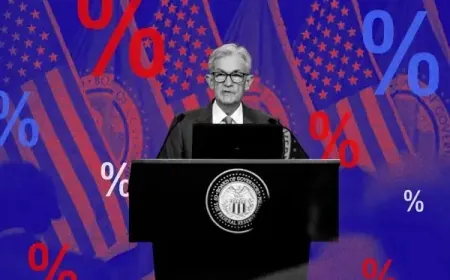Bitcoin Posts Worst Monthly Performance Since 2022 After Large Liquidations and ETF Withdrawals
Bitcoin fell about 23% in November, its steepest monthly loss since 2022, after large liquidations and heavy withdrawals from U.S.-listed Bitcoin ETFs.

Bitcoin is heading toward its most difficult month since the industry crisis of 2022, weighed down by large liquidations, shrinking futures activity, and heavy withdrawals from major investment products. The token briefly dropped to $81,629on Friday before recovering part of the decline, and Ether fell below $2,700 during early trading.
With Bitcoin down roughly 23% in November, the scale of the drop is drawing comparisons to June 2022, when the collapse of TerraUSD set off failures across crypto lenders, hedge funds, and eventually FTX. Although the current decline is not tied to a single corporate breakdown, market structure weaknesses — especially the amount of leverage built up over the past several weeks — are playing a major role.
Much of the recent downturn can be traced to activity that unfolded on Oct. 10, when Bitcoin’s price pulled back enough to trigger automatic closures of highly leveraged positions on major derivatives platforms. That single day erased roughly $19 billion in leveraged bets and removed about $1.5 trillion from the combined value of digital assets. Forced closures tend to accelerate declines because traders have no control over the timing or size of the exit; the system liquidates positions at market prices, producing rapid and sometimes disorderly moves.
The pressure didn’t stop after the October event. Data from CoinGlass shows that an additional $2 billion in leveraged positions were wiped out in the past 24 hours, confirming that traders had continued to hold substantial exposure even after earlier losses. As more positions are forced out, liquidity thins and price moves become larger because fewer buyers are willing to absorb heavy selling.
Institutional participation has also shifted noticeably. A group of twelve U.S.-listed Bitcoin ETFs recorded $903 millionin outflows on Thursday — the second-largest single-day withdrawal since the funds began trading in January 2024. Large investors typically add positions during deep pullbacks if they expect a rebound. Their absence this time suggests that many are waiting for clarity before committing capital. Open interest in perpetual futures, another gauge of market engagement, has dropped 35% from its October high of $94 billion, indicating that active traders are stepping back rather than attempting to buy weakness.
Movements in U.S. equities have added an additional layer of influence. Stocks that rallied earlier in the week after Nvidia’s earnings later lost steam as investors questioned whether valuations had extended too far. Those swings made traders more cautious in assets that depend heavily on liquidity — and crypto is typically one of the first places where risk exposure is reduced during periods of uncertainty. As a result, fewer market participants were willing to counter forced sales coming from leveraged accounts.
Some fund managers believe the pattern of trading suggests that a large holder, or a small group of holders, is reducing exposure across multiple sessions. This kind of steady, measured selling can weigh on prices even without large public announcements.
“There is consistent unloading from one source, and the size indicates it is unlikely to be retail activity,” said Pratik Kala, portfolio manager at Apollo Crypto. He added that the absence of strong buy-side support makes each sale more impactful because fewer traders are willing to take the opposite side of the trade.
Another point of attention is Strategy Inc., the company associated with Michael Saylor’s long-standing Bitcoin purchases. The firm has used borrowed capital to build a sizable position in Bitcoin over several years. Extended price declines can increase scrutiny on those holdings because lenders typically require additional collateral if asset values fall below certain thresholds. Strategy Inc.’s shares dropped 5% on Thursday, prompting questions about whether traders are testing levels that could put pressure on leveraged positions.
Bitcoin is now more than 30% below its record high from early October. Trading activity has decreased, leveraged exposure has thinned, and institutional flows remain negative. When these factors occur together, price moves tend to become more volatile because the market has less depth and fewer high-volume participants willing to stabilize trading.
Recent price movements have been shaped mainly by the forced closure of leveraged positions and continued withdrawals from Bitcoin ETFs. With fewer large buyers stepping in, each wave of selling has had a stronger effect on price. Until liquidation activity slows and ETF flows stabilize, price levels are likely to respond sharply to even moderate selling because trading volumes are thinner than earlier in the year.
Why has Bitcoin fallen so sharply this month?
How large is Bitcoin’s November decline?
Why are Bitcoin ETFs recording heavy withdrawals?
Is this decline linked to a major collapse like FTX?
Are large Bitcoin holders selling during this downturn?
Also Read: Bitcoin Crashes to $89,500 — Lowest Price Since April Shocks Markets





























































